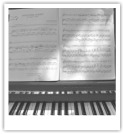Out of Our Minds
Chamber Music
Musical Mentors - Anton Reicha, Louise Farrenc, and Charles Gounod
CONCERT III
SUNDAY, FEBRUARY 13, 2022 @ 3:00 PM
Viterbo University Nola Starling Recital Hall
This concert is free and open to the public.
CONCERT III
SUNDAY, FEBRUARY 13, 2022 @ 3:00 PM
Viterbo University Nola Starling Recital Hall
This concert is free and open to the public.
